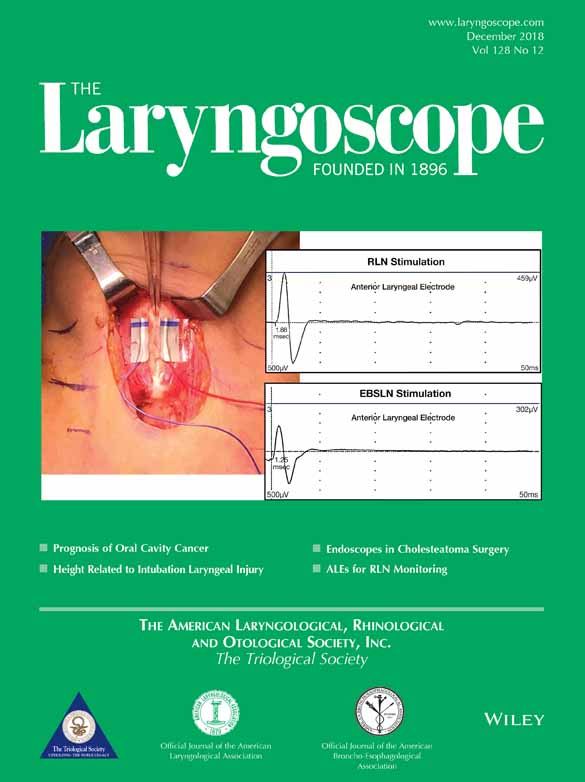Velopharyngeal dysfunction from intranasal substance abuse: Case series and review of literature
The authors have no funding, financial relationships, or conflicts of interest to disclose.
Abstract
Objective
Intranasal substance abuse with cocaine or opioids can result in complications involving the midline nasal and oral structures. When the defect involves the velopharyngeal musculature, this leads to velopharyngeal dysfunction (VPD). This article aims to illustrate this clinical entity through a series of four patients and a review of the literature.
Methods
A series of four cases of VPD due to intranasal narcotic use and their management are discussed. A comprehensive search in PubMed was conducted for cases of VPD associated with intranasal drug use in the English-language literature.
Results
Four female patients presented with symptoms of VPD, including worsening nasal regurgitation, poor speech intelligibility, and hypernasal speech. One patient presented with nasopharyngeal stenosis. All patients admitted to intranasal cocaine, methamphetamine, and/or prescription narcotics use prior to the onset of symptoms. The diagnosis was confirmed with abnormal velopharyngeal musculature seen on nasopharyngoscopy. Both conservative and surgical treatment options were proposed. A literature review identified nine cases of VPD. Erosion of the velum was seen in all cases. Reported treatments included obturator prosthetic, local flap, and free flap. Ancillary investigations were not consistently pursued to rule out other etiologies to VPD.
Conclusion
Intranasal illicit drug use can result in destructive changes leading to VPD. This is the largest case series to date of this difficult clinical problem. Management principles including options for conservative and surgical interventions are summarized.
Level of Evidence
4 Laryngoscope, 128:2721–2725, 2018




